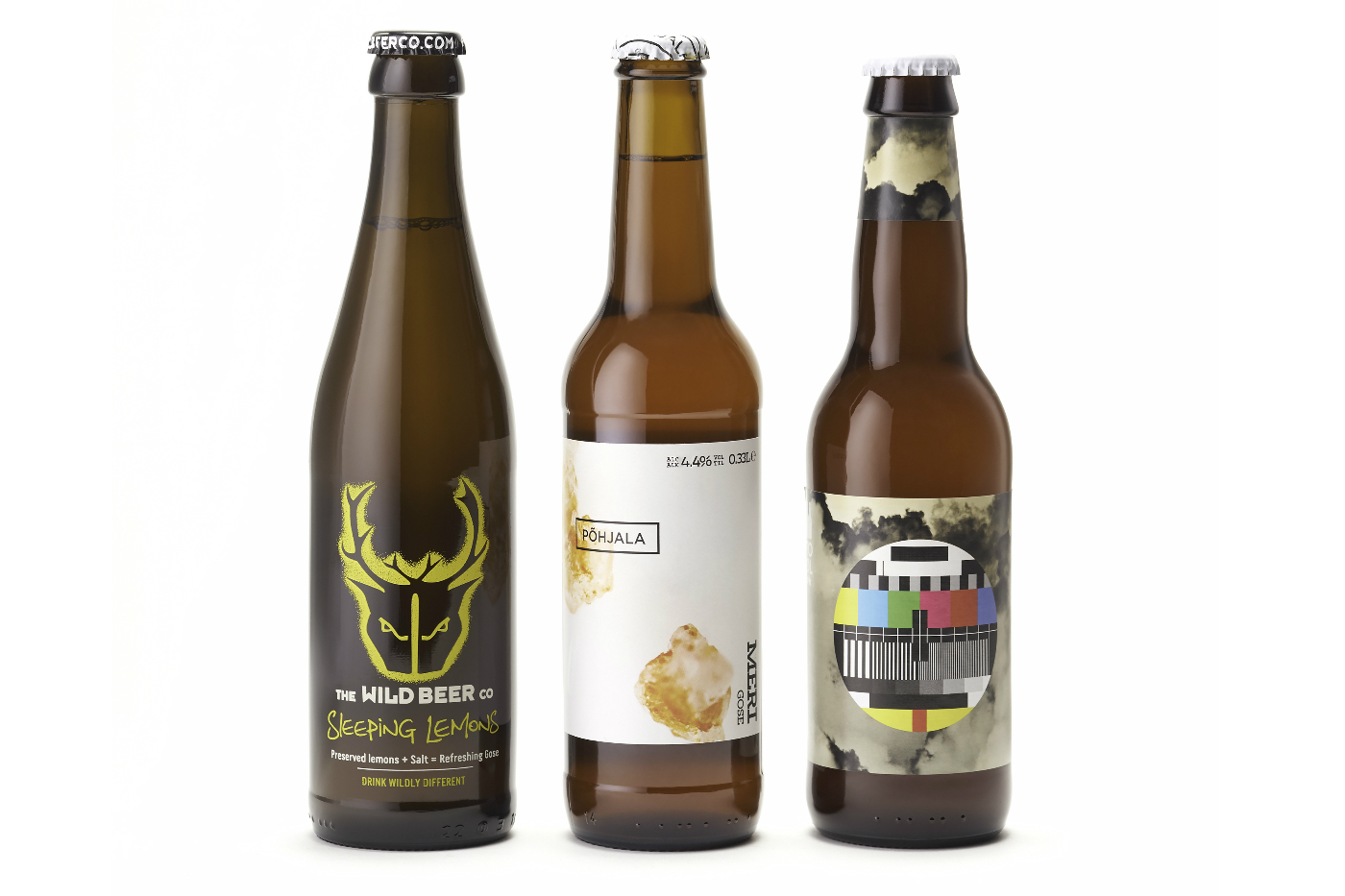Sour and salty, the gose is a sharp choice for satisfying on-trend drinkers looking for something different. By Jonathan White.
First things first, it is pronounced “goh-zeh”. You can blame the Germans for any confusion about that – although you can’t blame them for any confusion, phonetic or otherwise, with the Belgian-born gueuze style. Although the two styles do share similarities – think of them as weird European cousins – including tart sourness, wheat bases, little by way of hop flavours and, more often than not, lower abv, they are also very different: gueuzes are made by blending two differently aged lambics.
Hailing from the north-western town of Goslar on the banks of the Gose River – Gose is to there as Kolsch is to Koln – from perhaps as far back as 1,000 years ago, but at least 500 years, Gose is old school and it also shares something else with the TV cop who will find justice no matter what the suits down at city hall say: it’s willing to break all the rules. This is the German beer that refused to observe its famed purity laws, by adding salt, coriander and lactic bacteria to get that souring going. Often they are brewed with at least 50 per cent malted wheat and are characteristically cloudy to the eye and citrusy to the taste. The BJCP guidelines suggest that it needs a delicate balance, with “Moderate to restrained but noticeable sourness, like a squeeze of lemon in iced tea” and “Light to moderate salt character, up to the threshold of taste; the salt should be noticeable (particularly in the initial taste) but not taste overtly salty.” After dying out in the 1960s the style was revived in the 1980s, but it remains somewhat niche and often is employed by craft brewers experimenting with more out-there brews.
Best In Glass
Anderson Valley – G&T Gose
Opened way back in 1987, Anderson Valley Brewing Co was one of the handful of craft breweries around at the start of microbrewing’s 80s revival and they have been quietly pioneering ever since. It was in 2013 that they first started experimenting with brewing goses and the first – The Kimmie, The Yink, & The Holy Gose – was released to acclaim the following year, with some crediting the brewery and that beer for kickstarting the style’s revival. They have since gone on to make Blood Orange and Briney Melon goses and now this, inspired by every diplomat and their mum’s favourite mixed drink, the G&T. A limited edition in cans, this is available March through August. The three malts used are pale two-row, cara-crystal and wheat, alongside bravo hops. This is very noticeably a gose: lemon peel erupts from the can as soon as the tab is pushed open and it is evident on the tastebuds, too. Those pining for in-your-face juniper might be disappointed, but there’s a subtle lemon-lime flavour and honey notes by way of trade-off. Tangy.
To Ol – Gose To Hollywood
To Ol’s backstory is well documented but deserves a quick re-telling nevertheless. A dozen years ago, Tore Gynther and Tobias Emil Jensen were high school students under teacher Mikkel Borg Bjergsø. This being Copenhagen their school was “direct democracy-based”, which meant that they were allowed to set the curriculum and they put brewing on the agenda and taught themselves. Bjergso would go on to found Mikkeller, while To Ol – Danish for “two beers” – followed in its gypsy footsteps in 2010. This gose is brewed at De Proef in Belgium with California citrus fruit, five malts – pilsner, biscuit, cara pils, wheat and unmalted wheat – and citra hops for added citrus credibility. Pouring with a thick alabaster head atop an orange hue has the effect of a cartoon cigarette. The nose is a tropical fruit salad, but all covered in lemon juice before lemons on top of lemons and, wait for it, more lemons. The taste is tart, almost sweaty, and it appears that they have made their gose with a very large pinch of salt. There’s also the dryness of lemons and some coriander in there, too. There’s a sense of Russian roulette to this – sometimes saltier and sometimes lemony – but it is moreish in its own way, despite being quite challenging.
Wild Beer Co – Sleeping Lemons
Lemons preserved in salt are a mainstay in Moroccan cuisine and the direct English translation of l’hamed marakad, as they are known in Moroccan Arabic, is “sleeping lemons”. It’s those preserved lemons that provide both the name and the backbone of Wild Beer Co’s gose, which they have since followed up with a 6 per cent abv export version and even a Sleeping Lemons gin. This pours cloudy but the nose is startlingly clear: resinous, charred lemons, carbolic soap, notes of pickled leather and drinking vinegar, while there is also a whiff of the farmyard in the air. And the taste is cleaner still. Mouthwatering acidity comes with the intake of the aroma and much of the lemon aspects of the nose continues on the palate with a refreshing American lemonade quality before a salty dryness later on and more than a hint of lemon barley water. Quaffable, although they do recommend it could act as “a sour lemon pickle to Moroccan food”.
Pohjala – Meri
Talinn, the capital of Estonia, has begun to make itself known in craft beer circles over the last six years and Pohjala have been at the vanguard of raising the nation’s beer reputation beyond Soviet-era depression and dominant local brands you’ve never heard of. Started by three friends, they reached out to intern at Brewdog and came back with a new partner and head brewer, Scotsman Chris Pilkington. In the five years, Pohjala – pronounced puh-ya-la, meaning “Northern realm” and used to refer to the countries of the region – has gone from contract brewing to its own brewery to its currently under-development new facility that will triple their existing capacity. Meri is a girl’s name and surname that means “sea” and there are maritime aromas to this caramel-coloured concoction, including sea breeze and peat notes. Made using six malts – pale malt, wheat malt, oats, cara pale, melanoid malt and flaked wheat – with El Dorado hops, coriander and Himalayan pink salt, it’s the last addition that makes itself most known. This is saltier than a back-chatting teen, but far more palatable. Less lemony, less dry and noticeably boozier than these other goses, it is not as refreshing but feels more like a beer.








